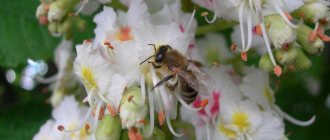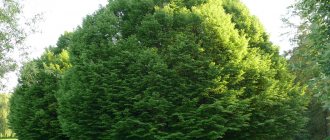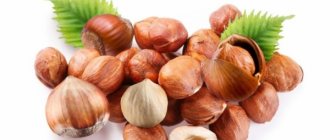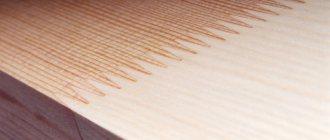Today there are many different types of chestnuts known. Each of them has unique qualities and properties. The chestnut genus includes trees and shrubs. The plant, regardless of the species, prefers to be in a mild, warm climate. Therefore, it is most often found in East Asia, Southern Russia and Ukraine, the Balkans, the Mediterranean, and also in the USA on the Atlantic coast. It does not tolerate drought, but loves light. It must be kept constantly moist.
Chestnuts are usually used for decorative purposes. They are planted in parks, squares and along alleys, creating beautiful recreation areas. In addition, the fruits of some plant species are edible. You can prepare a large number of interesting and tasty dishes from them.
Types of flowering chestnuts
A large list of the most beautiful types of white lilies (+ photos)
Over the centuries, growing trends have changed, and different types of wood are found. They vary in distribution area and in fruit quality, tree structure, longevity and use.
Chestnut
Popular view. Blooms in areas of constant rain and high humidity. The fruits are suitable for consumption with a pleasant sweetish taste. The main ingredient in the production of sweets and jams.
Chestnut
Fruits of chestnut
Horse chestnut
The horse chestnut, or common chestnut, is a centuries-old tree with roots in Western Asia and Eastern Europe. Popular all over the world. The horse species is used as an ornamental plant for parks and alleys. Nuts are not edible. The name suggests that horse chestnut was used mainly as food for horses.
Description of the species:
- Horse chestnut is similar to sweet chestnut in terms of tree structure, but their fruits are very different from each other.
- The horse variety is larger in size and the skin is much coarser than the sweet variety.
- The needles are wide and less frequent.
- Horse chestnut fruits contain a high percentage of saponins and glucosides, which are unpleasant to the taste.
horse chestnut
Horse chestnut fruit
Australian chestnut
This species does not take its name from its country of origin. The Australian species was brought to the mainland by emigrants. In particular, from Great Britain, Ireland and China, who arrived in Australia for the purpose of gold mining between 1850 and 1870.
The Australian chestnut differs from other breeds in its ideal shape. It amazes with its bright emerald hue and smooth leaves. Gets along great even at home. In favorable conditions, the height reaches 10 meters. The fruits have a sweetish, rich taste and are suitable for making jam.
Australian chestnut
Australian chestnut fruits
Japanese chestnut
Distributed on the mountain slopes of Japan. The tree blooms very early - already in the second year after planting. Selects clay soil and humid climate. The height of an adult specimen is about 15-20 meters. The branches fall to the ground and bear large edible fruits.
Japanese chestnut
Japanese chestnut fruit
Chinese chestnut
The species blooms mainly in China, Vietnam and Korea, creating entire chestnut forests. Chinese chestnut chooses soils rich in calcium. The flowering period begins quite late - in the fifth year after planting.
Flowers of the Chinese species are unlike any inflorescence of other species. These are the thinnest long flowers, shaped like the top of a reed. The fruits of Chinese chestnut are used in the food industry and construction activities.
Chinese chestnut
Chinese chestnut fruit
Red chestnut
A tree of the horse chestnut family, a rare species. It is fragile and grows in parks. Due to its bright pink flowers and pleasant scent, red chestnut is often used for decoration purposes. It begins to bloom in early spring and ends flowering at the end of the season.
Red chestnut
Guinea chestnut
Originates in the tropical forests of Central America. The biggest maintenance challenge is the large amount of water the tree requires to grow. The Guinea chestnut is a bright representative of the Baobab family. The shape resembles a bottle, since in the lower part the chestnut tends to accumulate moisture to saturate the trunk of the fruit.
In Russia, Guinea chestnut is used as part of home interiors. It adapts well to room temperature and does not exceed small sizes if the space is limited by a vase. Flowering Guinea chestnut at home is almost impossible.
Smooth chestnut
Another representative of the horse chestnut family, therefore the fruits of the subspecies are inedible. Smooth chestnut blooms mainly in areas of North America, Central Asia and Europe. Frost-resistant and light-loving breed.
forest chestnut
The tree originated in Turkey, after which it spread throughout Europe. Forest chestnut is popular in the United States, where it is part of the crops that decorate national parks and gardens with beautiful flowers. The tree cannot bear edible fruit. Therefore, it is used only for decorative purposes.
Preparing for winter
The tree tolerates low temperatures well. However, for the first time for three years, young seedlings are well wrapped for the winter. Burlap, which is folded in several layers and carefully secured, is well suited for heating. Don't tie it too tight. If too much frost has caused the bark to crack, the damaged area is first treated with an antiseptic and then covered with garden varnish.
Currently reading:
- How to grow Chinese cabbage in open ground
- Planting to decorate the site with three types of coniferous trees
- Using hydrogel in open ground for plants
- Growing decorative chestnuts at home
Share the news on social networks
About the author: Victoria Semyonovna Nakhodkina
Leading researcher at the laboratory of vegetable and berry crops, Yakut Scientific Research Institute of Agriculture, Siberian Branch of the Russian Academy of Agricultural Sciences, Republic of Sakha (Yakutia).
What time of year do they ripen?
All types of flower beds, list with photos
Horse chestnut differs from edible ones in terms of ripening. Edible nuts are harvested from September to November. Freshly picked fruits are very capricious and, if stored improperly, quickly become moldy. Therefore, dried and canned products are more often found in stores.
Edible chestnut trees begin to bear fruit only at the age of 15 years. Then the plants begin to produce large harvests each year. The nuts fall off in two weeks. They are usually brought down using long poles. Before this, the area under the tree is cleared of leaves and other debris.
Large and medium-sized nuts are mainly used for food. In the natural environment, approximately 200-300 kg of crop is harvested from 1 hectare of land. Under artificial conditions, fruitfulness is lower - no more than 50 kg per bush.
Chestnuts can be eaten fried or baked. They are often added to flour to improve taste. Widely used in the confectionery industry.
Pediatricians do not recommend introducing chestnuts into the diet of children before 4-5 years of age.
Fresh fruits have a pleasant and sweet taste. Heat-treated nuts have a texture similar to potatoes.
Horse chestnut has early ripening periods. The fruits can be collected as early as August - September. In spring, many chestnuts form on the trees, but not all of them ripen. Therefore, some of them are dumped in the summer. By the end of the period, only large, ripe fruits remain on the trees.
Inedible nuts have taken their rightful place in traditional medicine recipes. They are used to make medicinal decoctions, ointments and tinctures. And the plants themselves, thanks to their abundant and beautiful flowering, are often used for landscaping.
Selection rules
Edible chestnut ripens in August-November. At this time, you can find freshly harvested nuts in markets and stores.
To buy a product of proper quality, you should pay attention to:
- Form. Good nuts are large and have the same appearance.
- Weight. High-quality fruits are always hard and heavy, without any dents.
- Color. Good nuts are glossy in appearance, evenly colored in a rich brown color.
When buying a product on the market, it is important to make sure that the nuts are edible. Horse chestnut is poisonous and causes severe intoxication when consumed.
When choosing a product in a store, you need to pay attention to the release date and expiration date of chestnuts indicated on the label
Varieties
Insects











